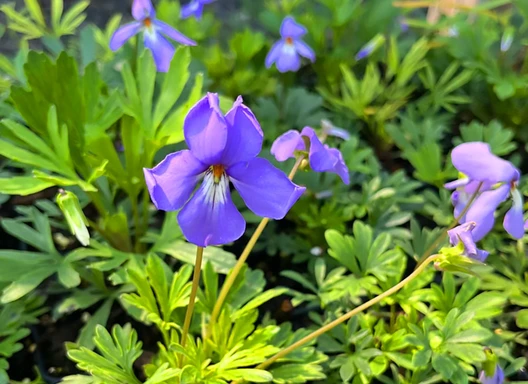Native Plants
The term "native plant" can be defined in many ways. A simple definition is this: Plants originally from the area. More thorough definitions include:
- Plants that occur naturally in an area and are thus better suited for survival under natural conditions.
- Plant species that occur naturally in a particular region, ecosystem, and/or habitat without direct or indirect human actions.
In Iowa, native plants are generally considered to be those species existing in the state prior to European settlement. While the activities of Iowa's indigenous people did affect the region's ecosystems, it wasn't until the mid-1800s that large-scale habitat alteration and the introduction of non-native plants began to significantly change Iowa's natural landscape. Prior to this time, more than 85 percent of the state was covered in prairie grasses and wildflowers. Wetlands, savannas, and woodlands also contain native plant species of the state that are selectively used in Iowa’s roadsides.
Use the Living Roadway Trust Fund’s (LRTF) native plant lists to learn more about Iowa's native plant species, many of which are reappearing on Iowa roadsides due to efforts of the LRTF, the Iowa Department of Transportation, and other organizations at the state, county, and city level.
Invasive Plants
Many definitions exist for the term "invasive plant" as well. Invasive plants are generally defined as species that have become established in an area and, by out-competing more desirable plants, degrade natural areas and agricultural land. Invasive plants are usually non-native, but sometimes native plants can become overly abundant in an area, often in response to habitat disturbance. Invasive plants continually adapt and move to new habitats, particularly in disturbed roadsides. Refer to the LRTF plants database for photos and information about some of Iowa’s common and showy roadside invasive plants.
